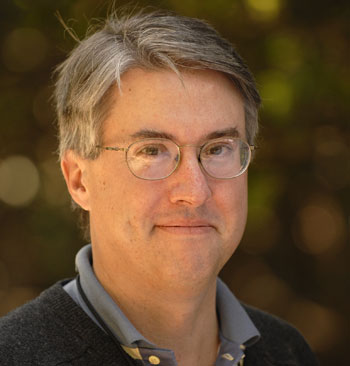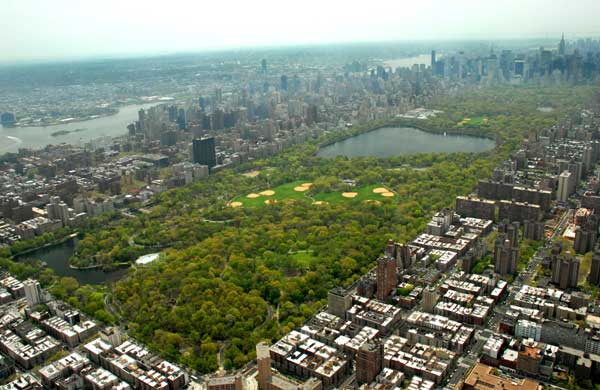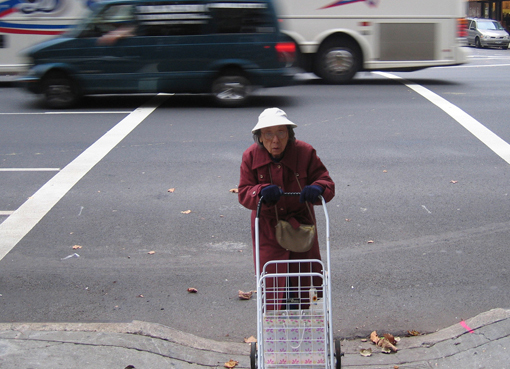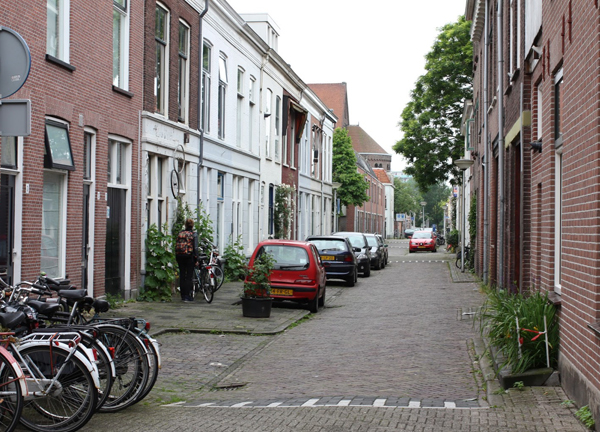News
Interview with David Owen
 David Owen
David Owen
In your new book, “Green Metropolis: Why Living Smaller, Living Closer, and Driving Less are the Keys to Sustainability,” you argue that New York City is one of the most sustainable cities in the U.S. because of its high population density. While NYC is one of the world’s largest cities, per capita fuel usage is low – people walk, bike, or use public transportation instead of relying on cars. Also, per capita energy usage is also low – stacked and compact apartments and businesses are more energy efficient than the national average. The environmental lessons of New York City are: live smaller, live closer and drive less. Why is this agenda central to achieving a more sustainable future?
New York City has the smallest per-capita carbon footprint of any American community—just 7.1 metric tons of greenhouse gases per resident per year, compared with a national average of 24.5. (Manhattan’s is even smaller, and is about the same as Sweden’s.) The reason is population density. Shrinking the distance between people—and, especially, between people and their destinations—reduces energy use, carbon emission, and waste in all categories. The most important factor is automobile use. Cars are bad for the environment not only because they directly consume fuel and emit pollutants, but because they facilitate the creation of far greater sources of energy profligacy and environmental damage, in form of sprawling communities, oversized dwellings, inefficient commerce, and huge networks of redundant civic infrastructure. New York City has the lowest automobile-to-resident ratio of anyplace in the United States. Fifty-four percent of the city’s households, and seventy-seven percent of Manhattan’s households, don’t own even one car—an unimaginable deprivation almost anywhere else in the country, where there are now more registered automobiles than there are licensed drivers. And New York City households that do own cars own fewer of them and use them far less. The New York metropolitan area accounts for almost a third of all the public-transit passenger miles in the United States, and it’s one of the last places in the United States where walking can be considered a primary form of transportation. Density is the reason.
 Central Park, NYC / The Cultural Landscape Foundation
Central Park, NYC / The Cultural Landscape Foundation
New York City looks so different from so much of the rest of the country that its environmental examples aren’t easy to apply—and even New Yorkers tend not to appreciate their power. (No one is more surprised than a Manhattanite to be told that Manhattanites are the nation’s lowest per-capita energy consumers.) But dense urban centers offer one of the few plausible templates for addressing some of the world’s most discouraging environmental ills, including climate change. We need to find ways to reduce the size of our living spaces, and decrease the distance between ourselves and our destinations, and begin to wean ourselves away from our near total dependence on automobiles. I spoke with one energy expert, who, when I asked him to explain why per-capita energy consumption was so much lower in Europe than in the United States, said, “It’s not a secret, and it’s not the result of some miraculous technological breakthrough. It’s because Europeans are more likely to live in dense cities and less likely to own cars.” In European cities, as in Manhattan, in other words, the most important efficiencies are built-in. And for the same reasons.
You argue that the best environmental investment a city can make should focus on how to make a city more attractive and tolerable for people to live closer together. For example, while planting trees in a neighborhood is important for improving air quality, trees are more important for creating attractive, dense neighborhoods people want to live in. Keeping crime low in a neighborhood is one of the best ways to make a dense neighborhood appealing (and therefore has a huge sustainability impact). How can cities fighting sprawl then best invest in density?
Because urban density has such high environmental value, we must find ways to shift new residential and commercial development away from places where population growth and economic growth exacerbate critical environmental problems and toward places where population growth and economic growth help to relieve them. For American cities, that will mean first understanding and then extending the benefits of population density and the thoughtful mixing of uses, as well as acknowledging that in a dense city the truly important environmental issues are less likely to be things like solar panels on building roofs than they are to be old-fashioned quality-of-life concerns like education, culture, crime, street noise, bad smells, resources for the elderly, and the availability of recreational facilities—all of which affect the willingness of people to live in efficient urban cores rather than packing up their children and fleeing to the suburbs.
Issues like these can be tough for traditional environmentalists to come to terms with, because they don’t feel green: Where are the organic gardens and the backyard compost heaps? Planting trees along city streets, always a popular initiative, has high environmental utility, but not for the reasons that people usually assume: trees are ecologically important in dense urban areas not because they provide temporary repositories for atmospheric carbon—the usual argument for planting more of them—but because their presence along sidewalks makes city dwellers more cheerful about dwelling in cities. Unfortunately, much conventional environmental activism has the opposite effect, since it reinforces the view that urban life is artificial and depraved, and makes city residents feel guilty about living where and how they do.
Some argue that city living can add years to your life. You cite research by Eleanor Simonsick at the National Institute on Aging, who pointed out that “New York is literally designed to force people to walk, to climb stairs – and to do it quickly.” Another study concluded that every minute spent walking extends life expectancy by three minutes. The U.S. government, with its new Livable Community Partnership, and design organizations are now focused on designing healthy communities that force people to get out of their cars and walk or bike. What do you see as the most effective design tactic for creating healthy communities in places that won’t resemble NYC any time soon?
City dwellers who fantasize about living in the country usually picture themselves hiking, kayaking, gathering eggs from their own chickens, and engaging in other robust outdoor activities, but what you actually do when you move out of the city is move into a car—and move your children into car seats—because public transit is nonexistent and most daily destinations are too widely separated to make walking or bicycling plausible as forms of transportation. Just about the first thing my wife and I did when we moved out of the city, twenty-five years ago, was gain ten pounds apiece, because we had gone from a place where we got around mainly by walking to a place where nearly everything we do away from our house requires a car trip.
To get people out of their cars, you have to do two things. First, you have to create enough density to make transit, walking, and bicycling conceivable, and, second, you have to make driving sufficiently expensive, inconvenient, and unpleasant to force people to consider alternatives. As Portland and Seattle have discovered, you don’t get people out of their cars just by building attractive transit systems. Washington D.C. has a beautiful subway system, but no one with a car feels compelled to take the train because there’s always a place to park.
Anyone who has spent any time in Manhattan has had the experience of being stuck in traffic in a taxicab and watching a little old lady on the sidewalk overtake them and disappear into the distance. That’s a very green experience. Traffic jams are underappreciated by mainstream environmentalists.
 Senior crossing the street in NYC / Streetsblog
Senior crossing the street in NYC / Streetsblog
At the street level, design professionals are implementing “traffic calming” measures that make communities more pedestrian-friendly (and therefore encourage density). Some tactics include planting trees near curbs (to reduce optical width of roads), adding bike lanes and wider sidewalks, clearly marked crosswalks, speedbumps, angle parking, etc. In Europe, you point to the idea of “shared spaces,” which increase the ambiguity of urban road spaces and, instead of creating more accidents, actually force drivers to slow down. Please describe this “shared space” concept, a few communities that are applying this idea, and what the impact has been on car and pedestrian access.
Shared space is a technique for controlling traffic by blurring, rather than sharply delineating, the boundaries between driving areas and walking areas; by making strategic use of traffic-impeding “street furniture,” such as plantings, benches, and bicycle racks; and by eliminating traffic lights, stop signs, lane markings, and other traditional controls. This sounds to many people like a formula for disaster, but the clear experience in the (mainly) European cities that have tried it has been that increasing the ambiguity of urban road spaces actually lowers car speeds, reduces accident rates, and improves the lives of pedestrians: drivers proceed more warily when they aren’t completely certain what’s going on. (Shared space is also actually an ancient idea, since it’s pretty much the way all large public areas functioned before the rise of automobiles.) The Dutch have a very similar traffic-calming tool, the woonerf, or living yard, which is a road that is designed to keep drivers guessing, by blending the spaces used by cars and pedestrians, and by placing thought-provoking obstacles in the paths of drivers.
 Woonerf in Holland / Cycling, livability, and European Inspiration blog
Woonerf in Holland / Cycling, livability, and European Inspiration blog
I once experienced much the same thing on a large dock in Massachusetts. Cars and trucks were allowed on the dock, along with a great deal of other human activity, yet there were no painted lines, signs, or other clear indications to show where anything was supposed to go. As a result, everyone moved slowly and cautiously, and took extra care to stay out of everyone else’s way. Similarly, in small-town centers the installation of the first traffic light is typically followed by a rise in accident rates, as drivers begin to rely more on signals than on sense.
Most American places are arranged around the convenience of drivers, rather than of pedestrians. “Right turn on red” is an anti-pedestrian concept—and one of the relatively few places in the United States where it’s illegal is New York City. Anti-jaywalking laws make things easier for drivers, not for walkers.
You quote one environmentalist who says “sprawl is created by people escaping sprawl.” Henry David Thoreau in his cabin, an iconic image of man at one with nature and living self-sufficiently off the land, you argue, set the “American pattern” for a kind of “creeping residential development.” Do you think many environmentalists still laud Thoreau and his like and are anti-urban?
Americans tend to think of dense cities as despoilers of the natural landscape, but urban density actually helps to preserve it. If you spread all 8.2 million New York City residents across the countryside at the population density of Vermont, you would need a space equal to the land area of the six New England states plus New Jersey, Delaware, Maryland, and Virginia—and then, of course, you’d have to find places to put all the people you were displacing. In a paradoxical way, the Sierra Club has been a contributor to residential sprawl, because its anti-city ethos, which has been indivisible from its mission since the time of John Muir, has fueled the yearning for fresh air and elbow room which drives not only the preservation of wilderness areas but also the construction of disconnected subdivisions and daily hundred-mile car commutes. Preaching the sanctity of open spaces helps to propel development into those very spaces, and the process is self-reinforcing.
Thoreau wasn’t actually much of an outdoorsman, and his cabin was closer to the center of Concord than to any true wilderness, but for many Americans he remains the archetype—the natural philosopher guiltlessly living off the grid, a mile from his nearest neighbor. Yet he actually set a very bad example, because anyone seeking to replicate his experience needed to move another mile farther along. Wild landscapes are less often destroyed by people who despise wild landscapes than by people who love them, or think they do—by people who move to be near them, and then, when others follow, move again. From an environmental point of view, dense cities are scalable; Thoreau’s cabin is not.
 Thoreau's cabin / Wikipedia
Thoreau's cabin / Wikipedia
In the burbs (the antithesis of the dense, sustainable NYC), homeowners are spending more than $40 billion per year on 32 million acres of lawns. However, despite all this investment in residential outdoor spaces, they aren’t being used. Studies cited in your book say familes only spent “negligble” amounts of time in their yards, mostly doing chores. People are admiring their yards from indoors. Additionally, only six percent of children now regularly play outside on their own. It seems people are getting some psychological benefit from viewing their yards (in the vein of E.O. Wilson’s biophilia), but how do you think residential landscapes should be re-developed so people re-engage with nature? Some argue for returning yards to nature, recreating larger ecosystems through tiny patches across residential areas.
In terms of environmental impact, what grows in a yard is probably less important than the yard’s size. Yards stretch the distance between people and their destinations and therefore reinforce our dependence on automobiles. The problem with almost any initiative aimed at “re-engaging people with nature” is that it tends to encourage the very kind of sprawling, wasteful residential development that threatens unspoiled areas in the first place. The way to protect natural landscapes is to concentrate human development, not to spread it out so that each of us can claim a small piece of it as our very own.
Environmentalists and urban planners sometimes say that, in order to get people out of their cars and onto their feet, developed areas need become more like the country, by incorporating extended “greenways” and other attractive, vegetated pedestrian corridors. It’s true that such features, along with parks and natural areas, can encourage some people to take walks. But, if the goal is to get people to embrace walking as a form of practical transportation, oversized greenways can actually be counterproductive. Walking-as-transportation requires closely paced, accessible destinations, not broad expanses of leafy scenery. If you want to see people moving around under their own power under the sky, don’t go to the country or the suburbs; go downtown.
Finally, you are fairly critical of LEED, saying there are too many LEED platinum buildings in the middle of nowhere that people then need to drive to – this is the result of “LEED brain,” a myopic focus on prerequisities and credits. How would you like to see LEED, LEED-Neighborhood Development (ND), Sustainable Sites Initiative, and other important rating systems, evolve? Do they need to incorporate population density differently?
LEED has been beneficial in some ways. It has raised awareness of the environmental implications of building in general, and has helped to spread public awareness and acceptance of various green construction practices. It has also prompted the upgrading of building codes in some parts of the country, has increased awareness of the possibility of recycling many kinds of demolition and construction waste, and has helped to raise manufacturing standards for building components. But LEED is expensive and cumbersome to implement, and it has encouraged the widespread public perception that emission-reduction and energy efficiency are premium add-ons, achievable only with high-priced technology and large teams of advisers, and therefore beyond the reach of ordinary people. LEED is also mainly concerned with individual building features, and has historically given little recognition to how buildings truly function in the communities of which they are a part—or how they function over time, after the awards have been handed out. The cachet and marketing power that come with a LEED designation have encouraged developers to pile on high-visibility, low-return features—such as non-functioning photovoltaic panels, economically unjustifiable fuel cells, and expensive computer-controlled lawn-watering systems—while ignoring simpler, lower-cost measures that are either less conspicuous or less rewarded by LEED.
A critical article about LEED in Fast Company in 2007 quoted David White, a climate engineer, who said, “Unfortunately, the exuberant creative stuff—the expensive buzz words such as ‘geothermal,’ ‘photovoltaic,’ ‘double façade,’ and ‘absorption chiller’—only makes sense when the basic requirements, such as a well-insulated, airtight façade with good solar control are satisfied.” LEED has evolved in some ways, but White’s criticism still applies. LEED is also far too building-centric, despite initiatives like LEED-ND. The Green Building Council just awarded my state’s first residential platinum designation, for a new house that has every conceivable eco-gizmo but is situated more than six miles from the nearest supermarket, on 13 acres of former farmland. The draftiest apartment in Manhattan is greener than that.
David Owen is a staff writer for The New Yorker and the author of a dozen books. His most recent book is "Green Metropolis: Why Living Smaller, Living Closer, and Driving Less Are the Keys to Sustainability." (Riverhead 2009)
Interview conducted by Jared Green.